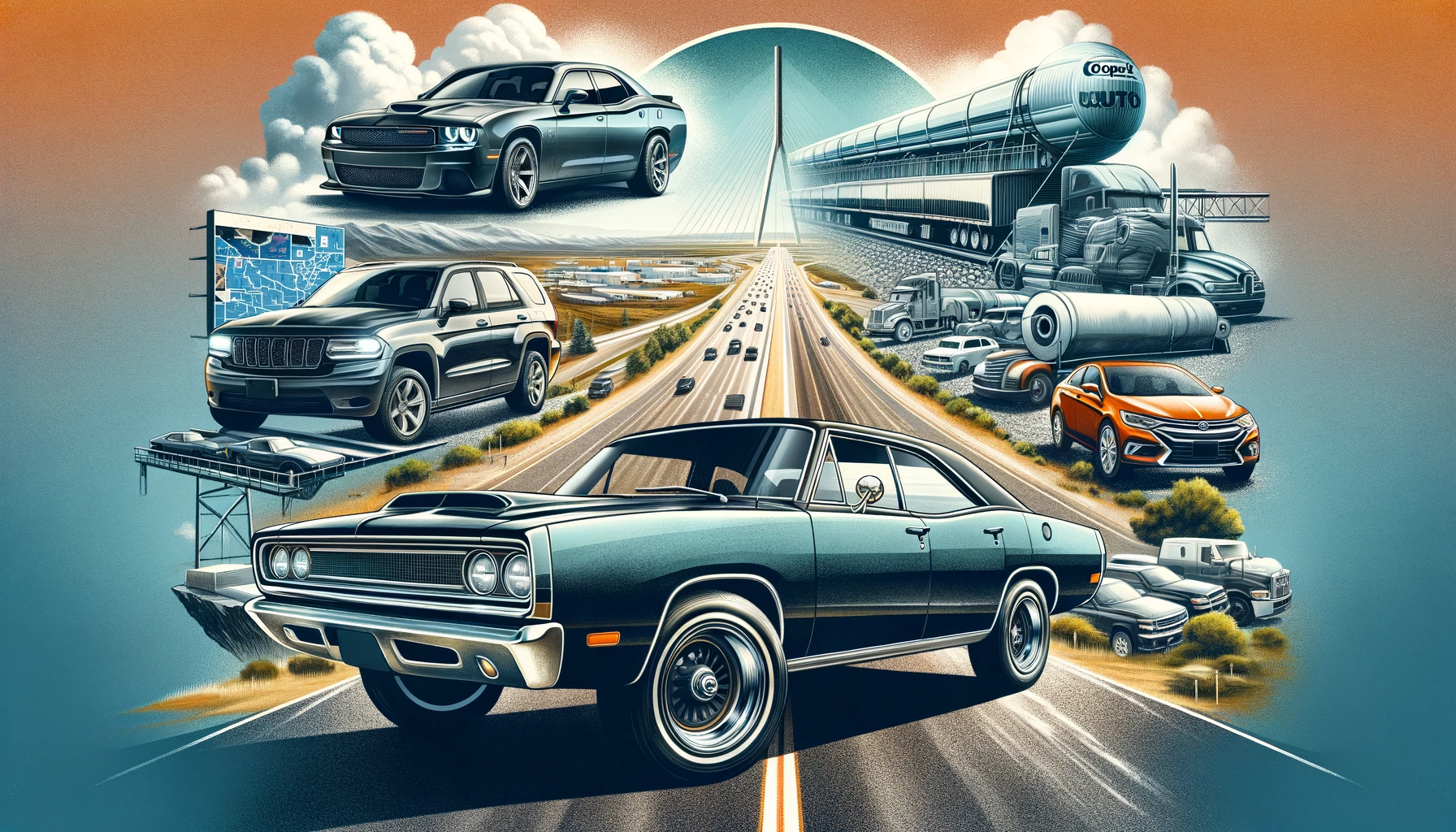
Power and Convenience: The Story of America's Big Engine Cars and Automatic Transmissions
30.01.2024 13:33
 197
197
In the United States, the automotive market has long been characterized by a preference for vehicles with larger engines and automatic transmissions. This trend is influenced by several factors, including cultural preferences, geographic conditions, economic factors, and automotive industry developments. Additionally, when considering exporting cars from the U.S. through platforms like Copart and IAAI, there are specific considerations to keep in mind. This comprehensive article will delve into the reasons behind the American preference for larger engines and automatic transmissions and provide guidance on choosing cars for export.
Cultural and Historical Factors
1. American Car Culture
- The U.S. has a deeply ingrained car culture that celebrates power and performance. This dates back to the early 20th century and is epitomized by events like drag racing and muscle car era of the 1960s.
- The sense of freedom and individuality associated with cars in American culture often translates to a preference for larger, more powerful vehicles.
2. Road Infrastructure and Geography
- The vastness of the American landscape, with long highways and wide roads, makes it conducive to driving larger vehicles.
- Regions with sprawling suburbs require extensive driving, often favoring comfort and power found in larger engine vehicles.
Economic Factors
1. Fuel Prices
- Historically, fuel prices in the U.S. have been lower compared to many other countries, making the running costs of larger engines less prohibitive.
- This economic factor has influenced consumer behavior, encouraging the purchase of larger, less fuel-efficient vehicles.
2. Manufacturing and Market Dynamics
- American automakers have traditionally focused on larger vehicles, including SUVs and trucks, which typically come with bigger engines.
- The profitability of these vehicles for manufacturers has further reinforced the trend.
Technological and Practical Considerations
1. Automatic Transmissions
- The evolution of automatic transmissions in the U.S. has been driven by a preference for convenience and ease of driving, especially in urban environments with frequent stop-and-go traffic.
- Advances in automatic transmission technology have also closed the gap in fuel efficiency and performance compared to manual transmissions.
2. Size and Safety Perception
- There is a common perception in the U.S. that larger vehicles are safer, which drives consumer preference towards these models.
- The emphasis on safety features and crashworthiness in larger vehicles appeals to the American consumer.
Exporting Cars from the U.S.: Copart and IAAI
1. Understanding the Platforms
- Copart and IAAI are popular platforms for purchasing vehicles in the U.S. for export. They offer a wide range of vehicles, including salvage titles, which can be a cost-effective option for international buyers.
- It's crucial to understand the auction process, bidding strategies, and the fees involved.
2. Market Research
- Before choosing a car for export, research the demand in the target market. Preferences for vehicle size, engine type, and brand can vary significantly between countries.
- Consider factors like local fuel prices, import taxes, and environmental regulations which can impact the feasibility and profitability of exporting certain types of vehicles.
3. Legal and Logistical Considerations
- Be aware of the legal requirements for importing vehicles in the destination country. This includes emissions standards, left-hand or right-hand drive configurations, and any modifications required.
- Plan for the logistics of shipping, including choosing a reliable shipping company, understanding shipping costs, insurance, and tracking the vehicle during transit.
4. Cost-Benefit Analysis
- Factor in the purchase price, auction fees, shipping costs, and any repairs or modifications needed. Compare these costs against the potential resale value in the target market.
- Consider the risks involved, particularly with salvage title vehicles which may require extensive repairs.
Conclusion
The preference for vehicles with larger engines and automatic transmissions in the U.S. is a multifaceted issue, rooted in cultural, economic, and technological factors. When considering exporting vehicles from platforms like Copart and IAAI, it is crucial to conduct thorough research and understand the complexities involved in international vehicle transactions. By carefully considering these factors, one can make informed decisions in the selection and export of American vehicles to other markets.
Newly added cars
2020 Toyota Tacoma Double Cab/Sr5/Trd Sport/Trd Off Road
2017 Toyota Tundra Crewmax Limited
Technical support
Content moderation
Contact address
Romania, Iași, postal code 700335
Phone
+33 7 68 74 77 31

